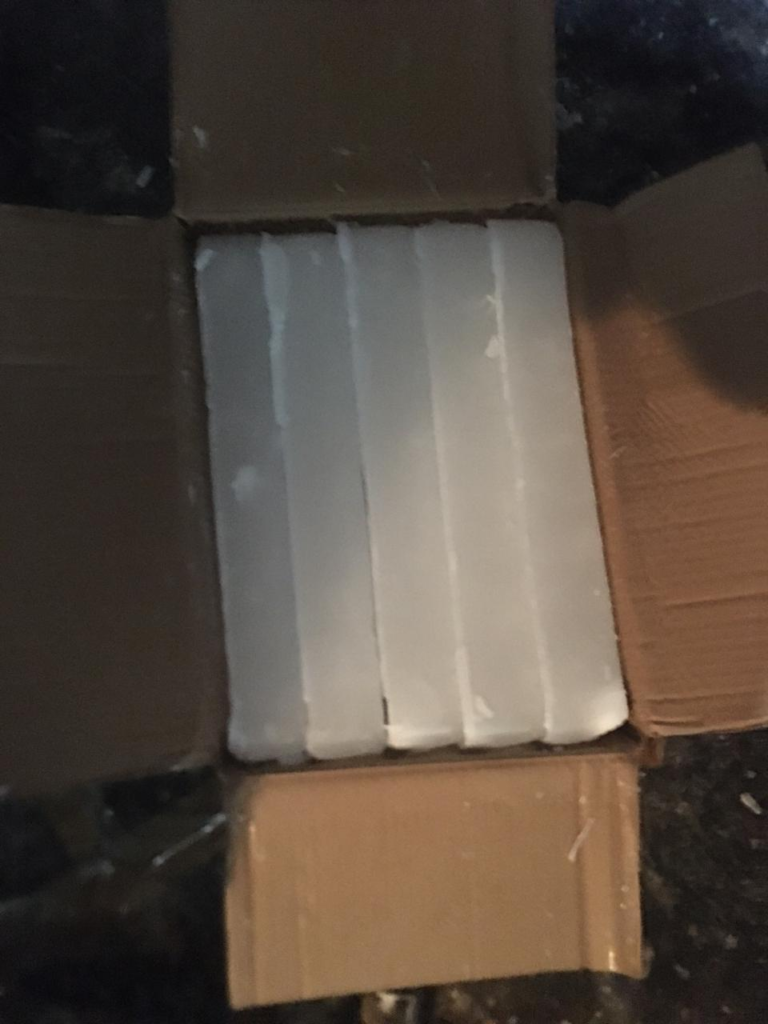Paraffin is familiar to everyone.
Well, who has not seen a different types of paraffin wax candle!
And who has not yet forgotten the school program in chemistry, he will remember that paraffin is a mixture of saturated hydrocarbons with an unbranched carbon chain and with an insignificant admixture of repeating hydrocarbons.
The chemical formula of different types of paraffin wax is C18 H38 – C35 H72.
Paraffin has a low melting point and already when heated to 45 – 55 degrees C, it turns into a dull transparent liquid.
When melted, the viscosity stage does not occur; in the molten form, different types of paraffin wax has good fluidity.
Different types of paraffin wax.
Depending on the fractional composition, melting point and crystal structure, different types of paraffin wax are divided into watery (melt at 27 degrees C), solid (melt at 28 – 70 degrees C) and microcrystalline (melt at 60 – 80 degrees C) ceresins.
Different types of paraffin wax. According to the degree of cleaning, paraffins are divided into:
Gachi (petrolatums), which contain oils up to 30% of their own weight;
Crude paraffins (ceresins), with an oil content of up to 6% by weight;
Paraffins purified and highly purified.

Different types of paraffin wax.
The degree of purification determines the color of the different types of paraffin wax – the snow-white color corresponds to highly purified and refined grades, and unrefined paraffins are usually yellowish-brown in color.
For different types of paraffin wax crystals, a ribbon or lamellar structure is characteristic.
Paraffin is obtained mainly as a product of oil refining and ozocerite, but there may also be a synthetic creation – reduction of CO with hydrogen.
According to chemical indicators, the hydrocarbons that make up the paraffins are divided into paraffins and ceresins.
Unrefined different types of paraffin wax turn blacker when exposed to light.
The range of use of paraffin and its derivatives is very wide.
At present, the extensive use of different types of paraffin wax is determined by its chemical and physical characteristics and important economic reasons: availability and low price.
Paraffin is used in electrical production, for the impregnation of wood species in match and pencil production, paraffin enters the garden pitch, is used for finishing fabrics, production of insulating materials, chemical raw materials.
Paraffin gives heat very slowly and this property determined its extensive use in medicine and cosmetology, where it is necessary to maintain the highest temperature for as long as possible.
Warm different types of paraffin wax compresses are used both for healing and for cosmetic procedures.
Different types of paraffin wax.
The airtight different types of paraffin wax mask makes a greenhouse effect for the skin, which has a beneficial effect on the activation of metabolic processes.
The face and hands, which are constantly exposed to negative weather causes in the autumn-winter period, receive elasticity and elasticity after paraffin masks and wraps.
Vaseline and synthetic fatty acids are made from paraffin, which are used instead of fats of vegetable and animal origin.
For such production, paraffin is oxidized with nitric acid or atmospheric oxygen at 145 degrees C.
Ski ointments are made from paraffin, which are also used for snowboards.
Currently, a wide range of such ointments is being made, which makes it possible to select the appropriate coatings for all air and snow temperatures.
Different types of paraffin wax. In the near future, paraffin began to be used more intensively in the food industry.
Previously, the use of paraffin in the food industry was limited to waxing milk bags and coating other surfaces of containers and food packaging.
Now paraffin is used even more extensively – food grade paraffin is produced under the P-2 brand and is used to cover fruits in order to protect them from smoldering and pollution.
Citrus fruits, pineapples, peaches, pears, apples, coffee beans, as well as sweets, dragees, chocolate and flour confectionery coated with glaze are covered with such paraffin.
In cheese making, paraffin is used to coat cheese rinds.
If you want to ask about other related products, you can visit https://www.dongkeunited.com/

AODING Group One- Stop Service for Candle-making.